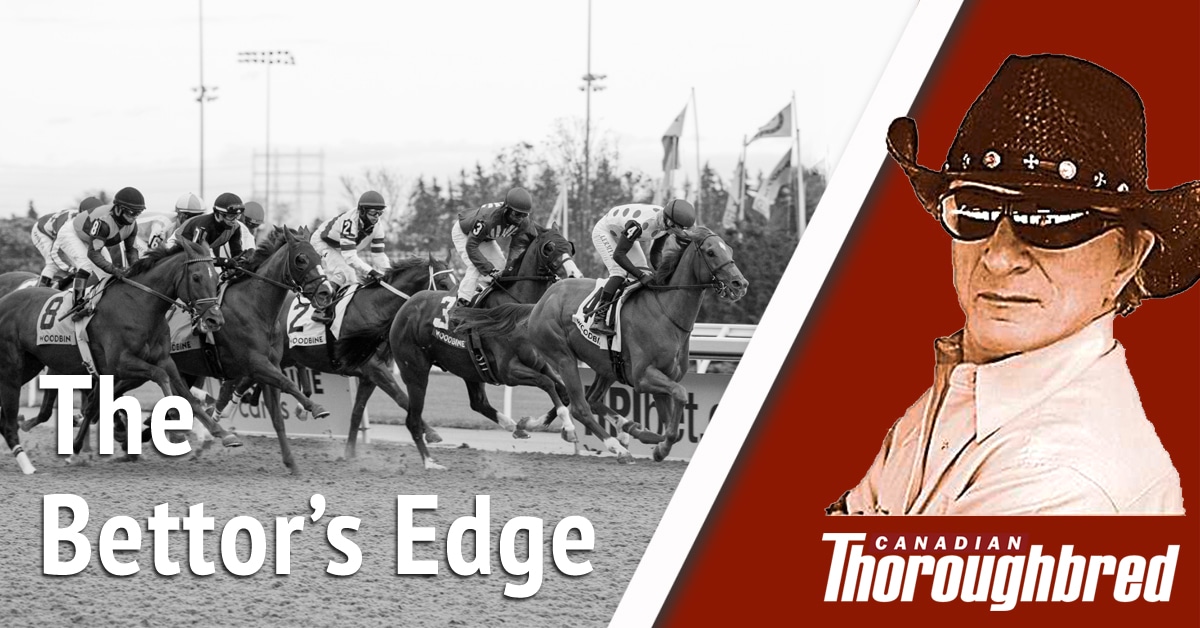Okay, repeat after me: “When there’s a particularly worthwhile play later in a day of racing . . . I vow to place that wager as soon as I start betting . . . and then not touch it.”
Of course you know the reason for the vow: Wagering excitement being what it is, we might have the propensity to go through our funds—either from our pockets or in an online account—and not have the wherewithal when our best play comes along. Or we might get distracted and miss getting the bet down on time.
If this hasn’t happened to you, you certainly must know other players who have put themselves in that position. I still recall the extreme whining in the Race Book at Assiniboia Downs, my home track, on Kentucky Derby Day in 2005 when a player who had made an early bet of $40 on the ultimate Derby winner, Giacomo, cancelled his tickets as he was running out of betting money. Giacomo won at odds of 50-1 – which cost him $2,000. More recently I watched with concern as the co-host of my betting group at the Downs whittled down a $30 exactor wager to $10 so he could use the $20 to add to a pick-4 group bet. Yup, the exactor won and the group collected just $250 for the $10 exactor instead of $750 if he had left the original wager in place.
But a far more costly set of missed wagers for our betting group took place this past Saturday, which is what has prompted the subject matter in today’s column. Some $640 in group bets (at $20 a share) were available to be placed at Woodbine, Tampa, Gulfstream (because of the mandatory pick-6 payoff) or Del Mar. Note the “or.”
What has been the group’s best track lately? Del Mar, where we had missed $7,000 in the pick-6 two Saturdays ago by deleting a horse because funds had been used up at other tracks.
So did we begin our betting by drawing up Del Mar tickets? We wish. If we had, we would have been sharing about $14,000 in the pick-6 or at least about $7,000 in the late pick-5. But we started out by making bets on the early tracks—Woodbine, Tampa and Gulfstream—and had a miserable $40 remaining to bet Del Mar where two $20-plus longshots (that won) were set to be included in a pick-5 or pick-6 we didn’t have enough money to play. And how did group bets at the earlier tracks fare? They went up in flames.
Del Mar and Santa Anita are our prime tracks primarily because we compute closing fractions in turf route races – and turf racing at California tracks is more consistent than anywhere else. I discovered that fact by doing a three-month study of Santa Anita race conditions some years ago. The study showed the lowest average payout of $6 was on turf route races. (The highest average payout, by the way, was in the 6 ½-furlong down-the-hill race. The payout averaged more than $20. The average payout in the often-chaotic non-winners of two races lifetime on the dirt was next highest at more than $13.)
So if group funds hadn’t been frittered away on less-certain plays Saturday, a $24 turf horse at Del Mar with the best closing fraction (#11 in race 5) could have produced lucrative results in other exotic bets. A potentially good pay day turned instead into a groaner.
Thus the vow. And if this is you and you’ve also taken the vow, consider how the racing gods might react if you break your vow. And hey, you may some day thank your vow for producing a highlight payoff in your horseplaying life.
Did you include Casse’s three horses in your Valedictory superfecta?
If you looked back at the previous two years of the Valedictory Stakes (which was run yesterday at Woodbine) you would have seen not only that Mark Casse-trained horses won both years, but that Casse had the top two finishers in the 2021 Valedictory. So he pretty much has owned the Grade 3 stakes race for three-year-olds and up.
Maybe that would have prompted you to conclude that all three of his horses entered in yesterday’s 14-horse field would finish in the superfecta – which they did. His horses finished first, third and fourth and the 20-cent superfecta paid $1,007 when his longest-odds horse, Conglomerate at 15-1, won the $150K race.
Will this prompt you to look back at previous winners of stakes races to see if there are similar trends? That’s obviously a way to get an edge over other players who haven’t thought about doing that.


